This post may contain affiliate links. Please read our disclosure policy.
How to make traditional Italian Easter bread. Braided soft, sweet and buttery brioche style bread baked with fun colourful eggs and bright sprinkles. This bread is perfect for Easter breakfast or served as a snack with butter or jam.
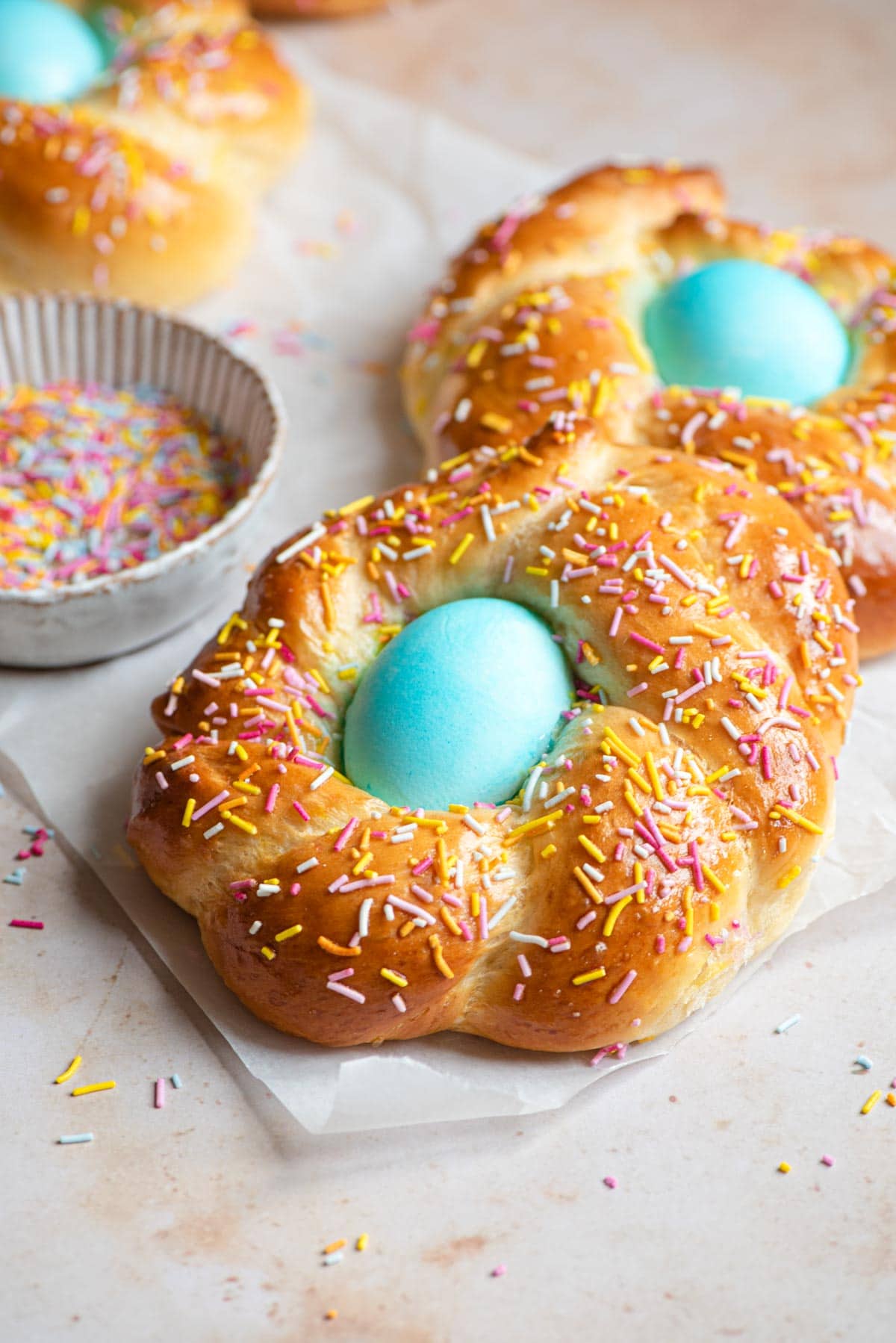
Pane di Pasqua or Italian Easter Bread is such a fun and delicious treat. It’s made with a sweet brioche style dough that’s super soft and buttery flavoured with lemon zest and vanilla.
The bread is shaped into wreaths or nests and pretty coloured eggs are placed in the middle to symbolise new life.
Traditionally, the nests are made with 3 braids to represent The Father, The Son and The Holy Spirit and eggs were not coloured nor were sprinkles ever added (those are modern additions).
The eggs and sprinkles are optional but are a fun addition and the bright colours make them perfect for celebrating the start of Spring.
Ingredients – what you need
See the photo below that shows you all of the ingredients you need plus some important notes!
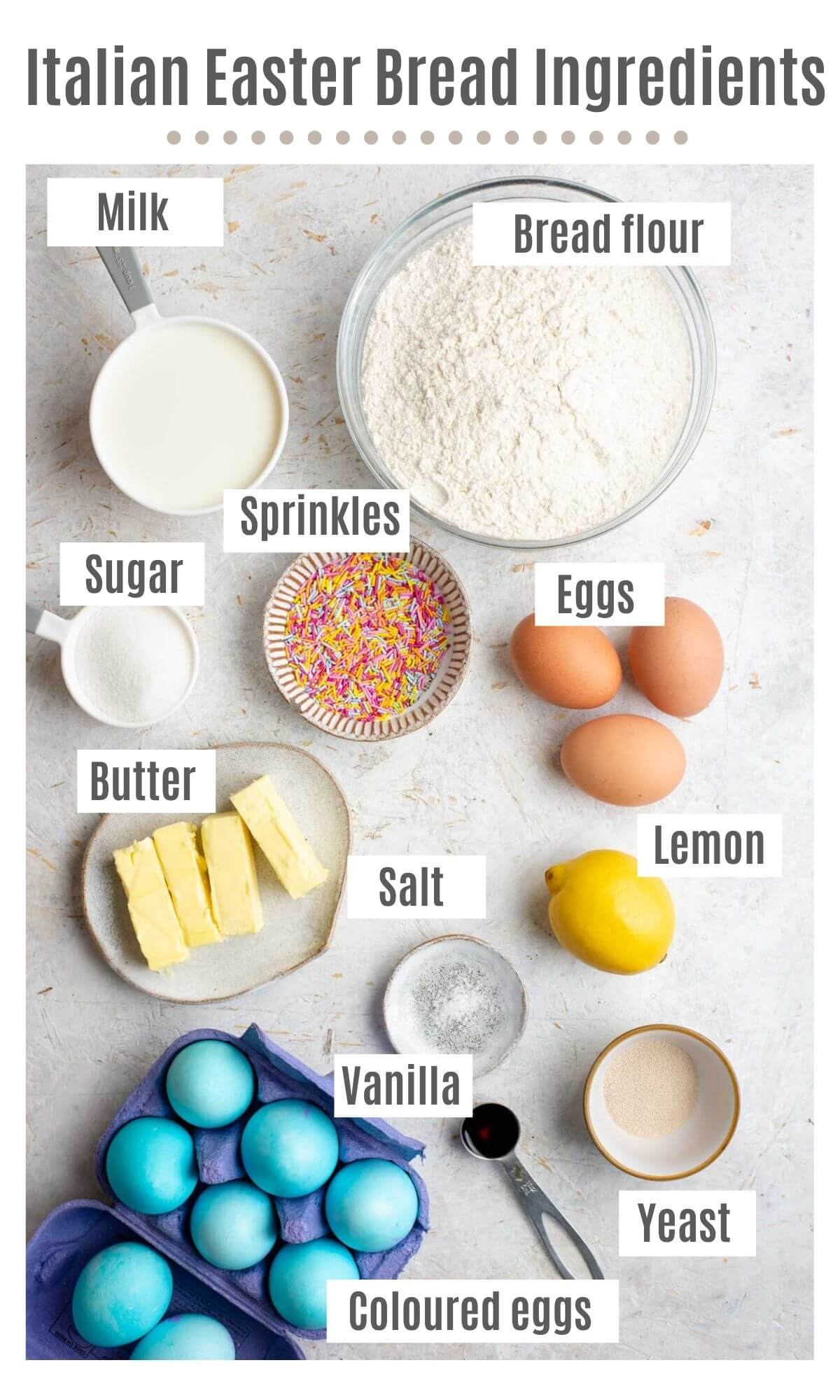
Pin this now to find it later
Pin It- Flour – bread flour gives this bread a nice soft texture. You can use all-purpose flour if you don’t have any but just bear in mind it’ll change the texture slightly.
- Sugar – use white granulated sugar.
- Milk – use whole milk (full fat) for a richer dough.
- Vanilla – use real vanilla extract or vanilla bean paste don’t use essence.
- Yeast – use a dry instant yeast. The yeast I use doesn’t have to be activated in liquid first but yours might. If so, add it to a little bit of the warm milk.
- Citrus zest – you can add the zest of 1 lemon or orange to the dough. I used lemon but both are delicious.
- Salt – although this is a sweet easter bread salt is essential for enhancing the flavours so don’t skip it.
- Sprinkles – the sprinkles are optional so you don’t have to use them.
- Coloured eggs – you can use any colour of food colouring you like to paint the raw eggs. Don’t boil them first.
Step by step photos and recipe instructions
Add the flour, sugar, salt and lemon zest to a bowl of a stand mixer and mix to combine (photo 1).
Add the yeast, mix to combine then make a well in the centre of the bowl. Add the whisked eggs (2 large), warm milk, melted butter and 1 tsp of vanilla (photos 2 & 3).
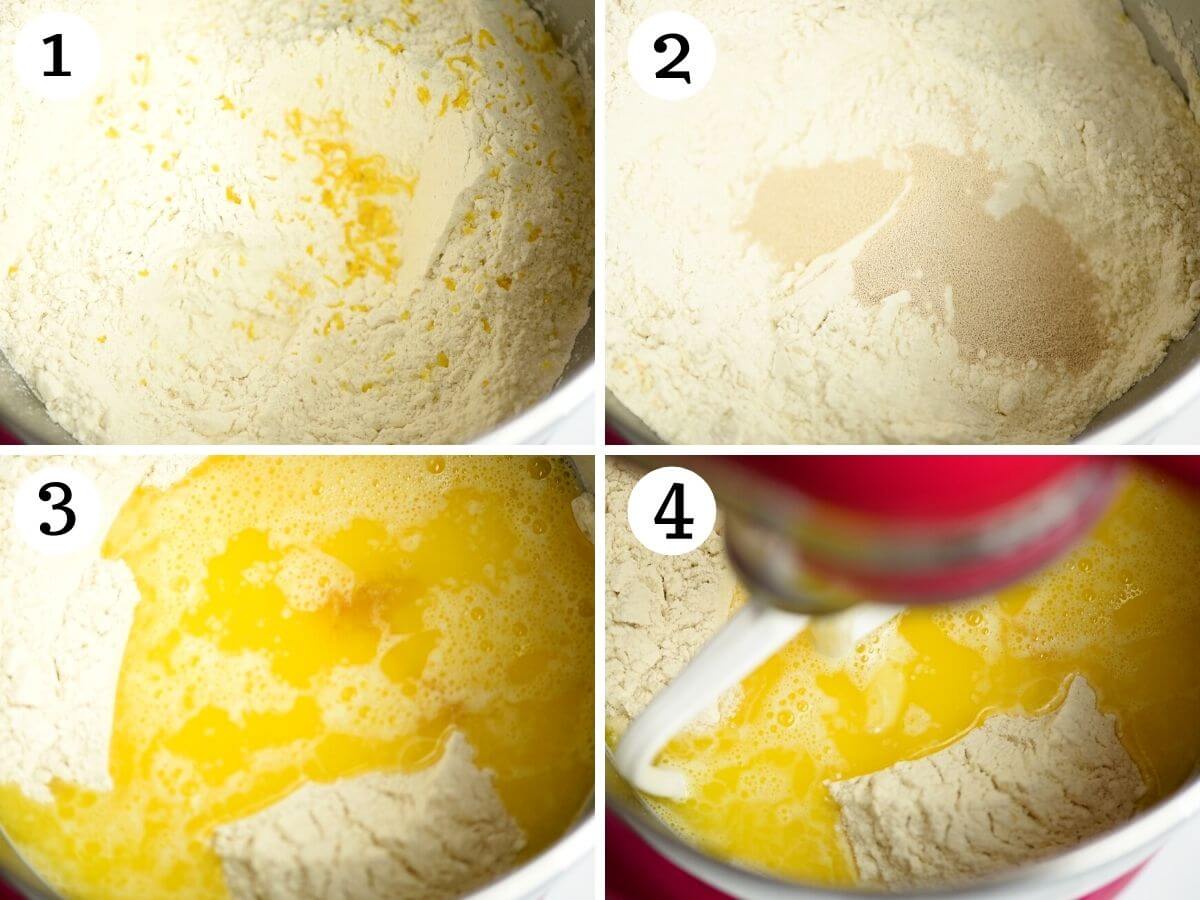
Using a paddle attachment mix everything for a few seconds until a rough dough forms then swap to a dough hook attachment and knead the dough for 10 minutes on a medium/low speed. The dough will be very sticky but shouldn’t stick to your hands when touched (photos 4-6).
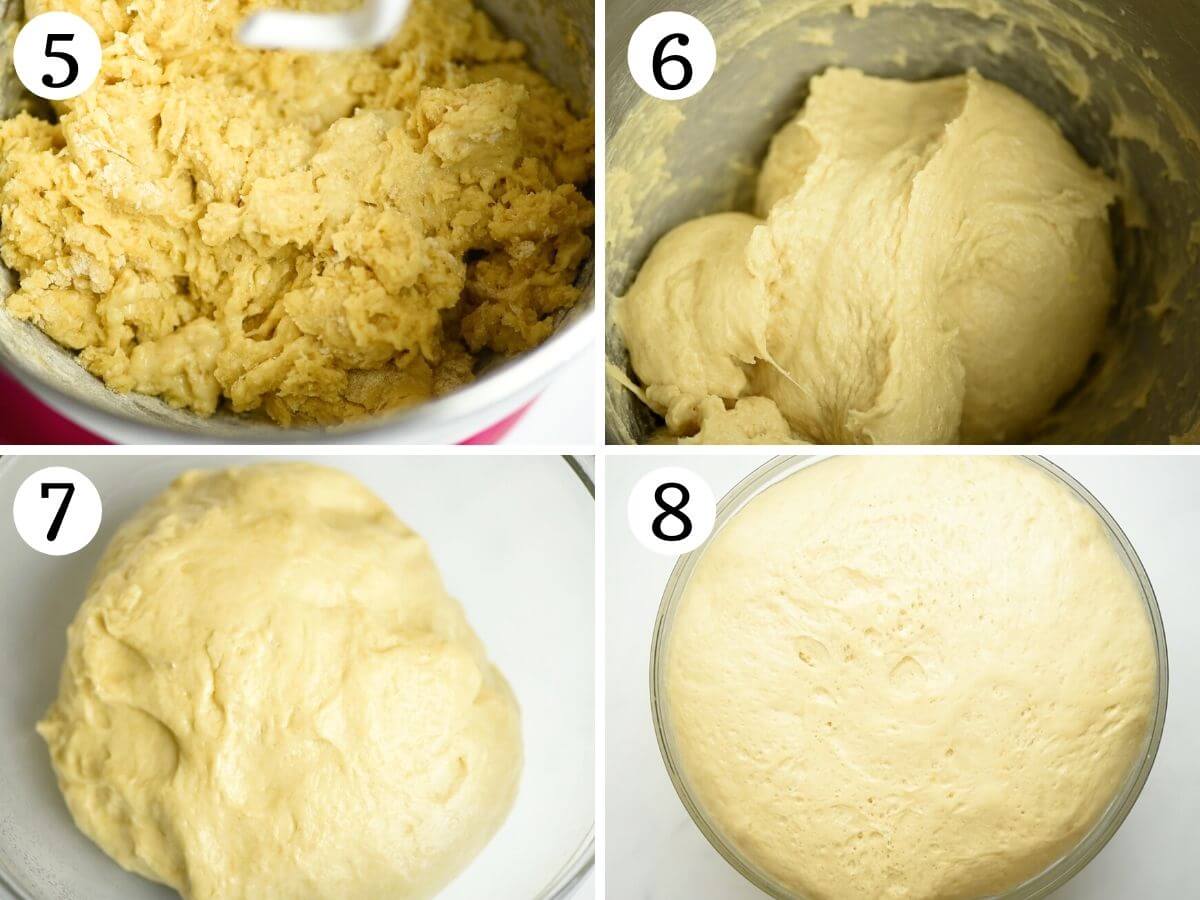
Transfer the dough to a clean, lightly oiled bowl, cover with plastic wrap and let it rise for 2 hours or until doubled in size (photos 7 & 8).
How to dye the eggs different colours
Make sure to paint raw eggs, don’t cook them first and white coloured shells work best to give you clear and bright colours.
I find that gel food colouring is best (you can choose any colour you like).
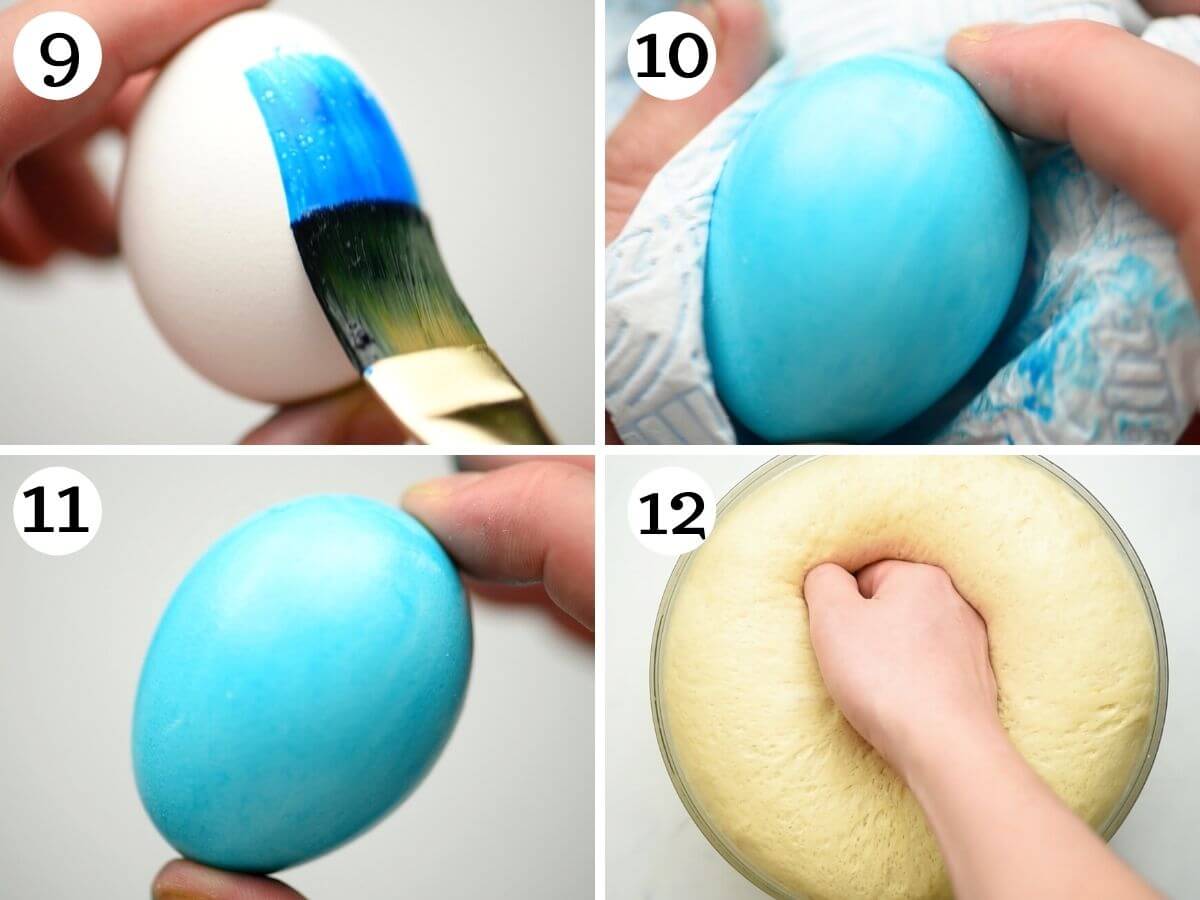
Using a damp clean paintbrush, dip it into the gel food colouring and brush it all over the eggs then rub a dry kitchen paper towel over the egg, this gets rid of any visible brush strokes and gives them a nicer finish (photos 9-11).
Once dried gently rinse them under cold water to remove excess colour and pat dry.
How to braid the Easter bread
Once risen, knock the air out of the dough and place it on a clean work surface very lightly dusted with flour (don’t add too much or it’ll be too difficult to roll) (photos12 & 13).
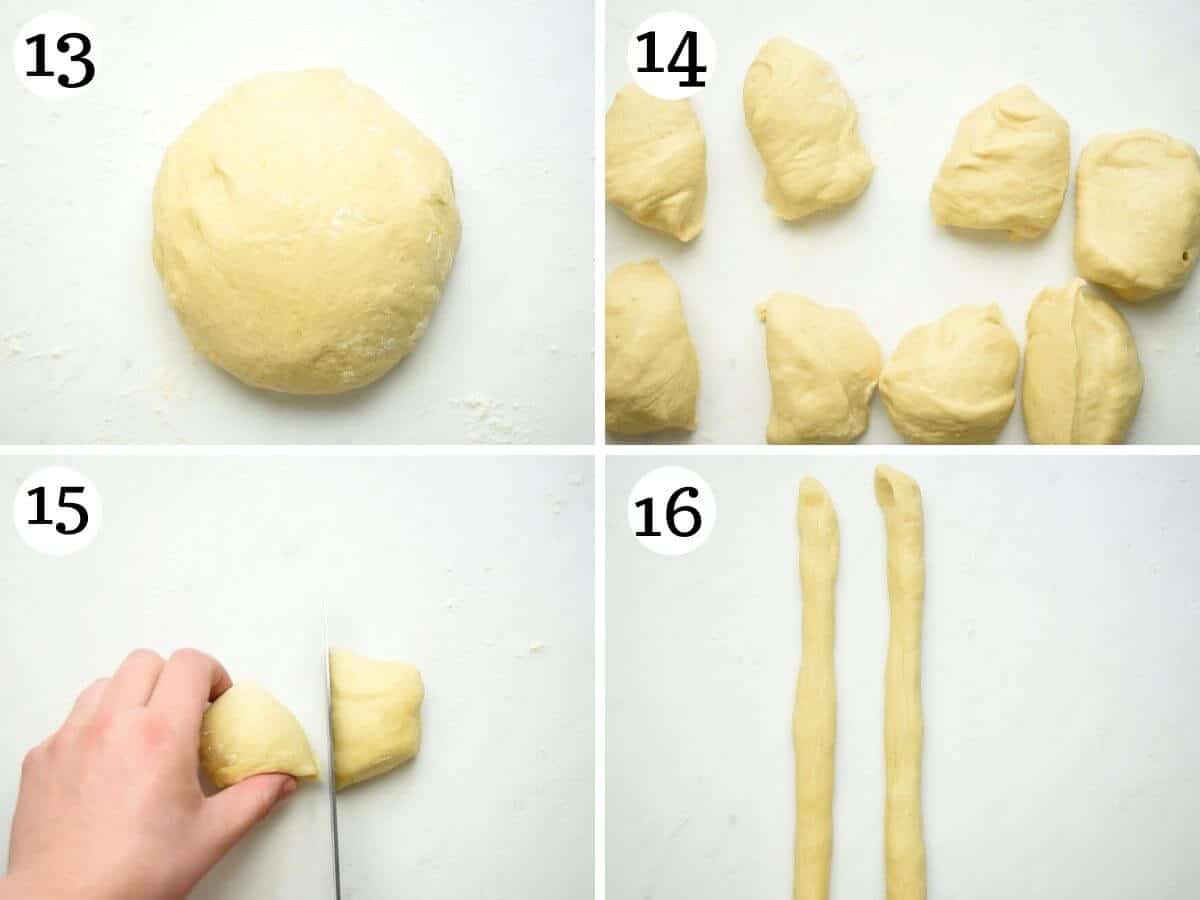
Cut the dough into 8 then cut each piece in half so you have 16 pieces. Roll two pieces of dough into roughly 10 inch long strands (photos 14 & 15).
Pinch the strands together at the top and weave them together to create a braid (photos 17 & 18).
Join the top and bottom ends together to create a wreath then place on a baking tray lined (2 inches apart) with baking parchment and place a coloured egg in the middle of the wreath. Repeat with the remaining pieces (photos 19 & 20).
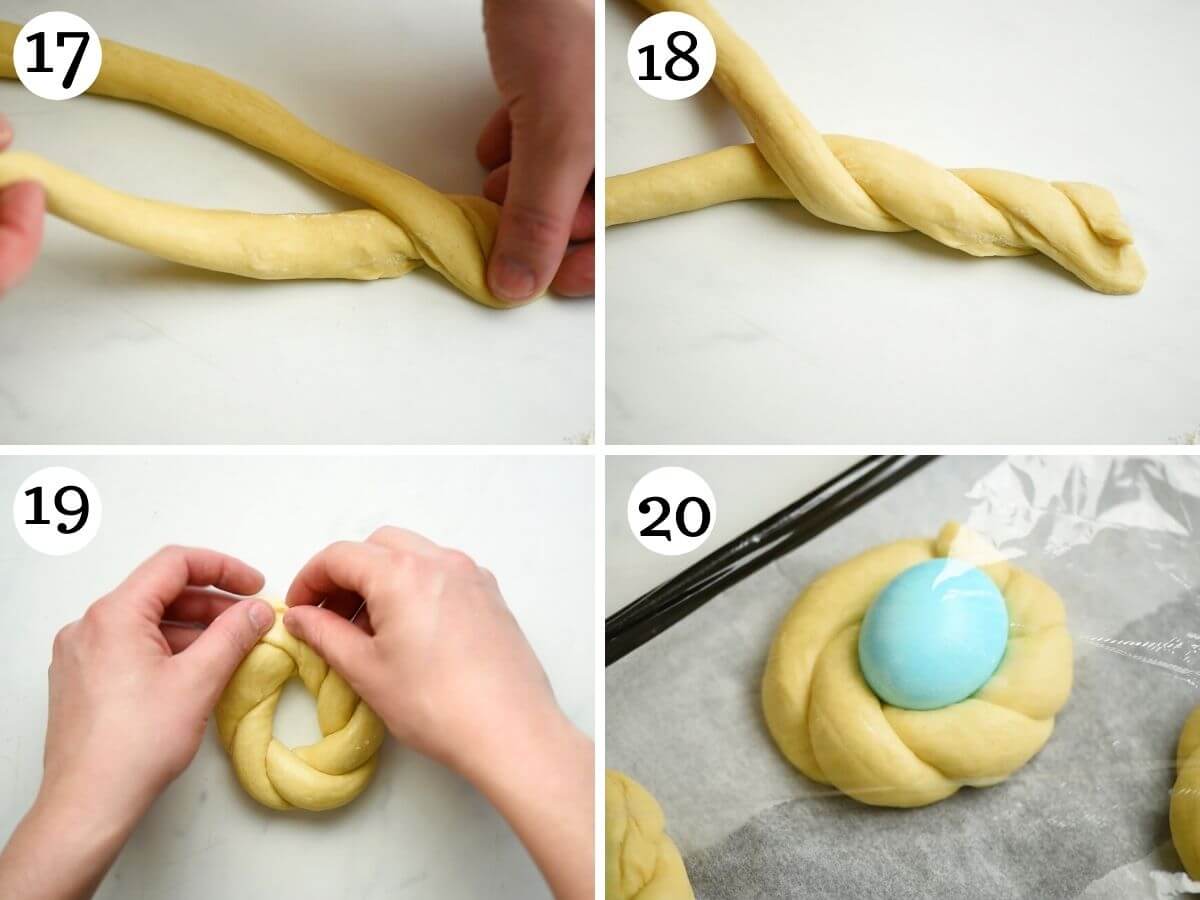
Cover the baking tray with plastic wrap and leave to rise again for 1 hour (photo 20).
Gently brush the Easter bread with a beaten egg and top with sprinkles. Bake in the oven for 20-25 minutes until golden brown on top (photos 21-23).
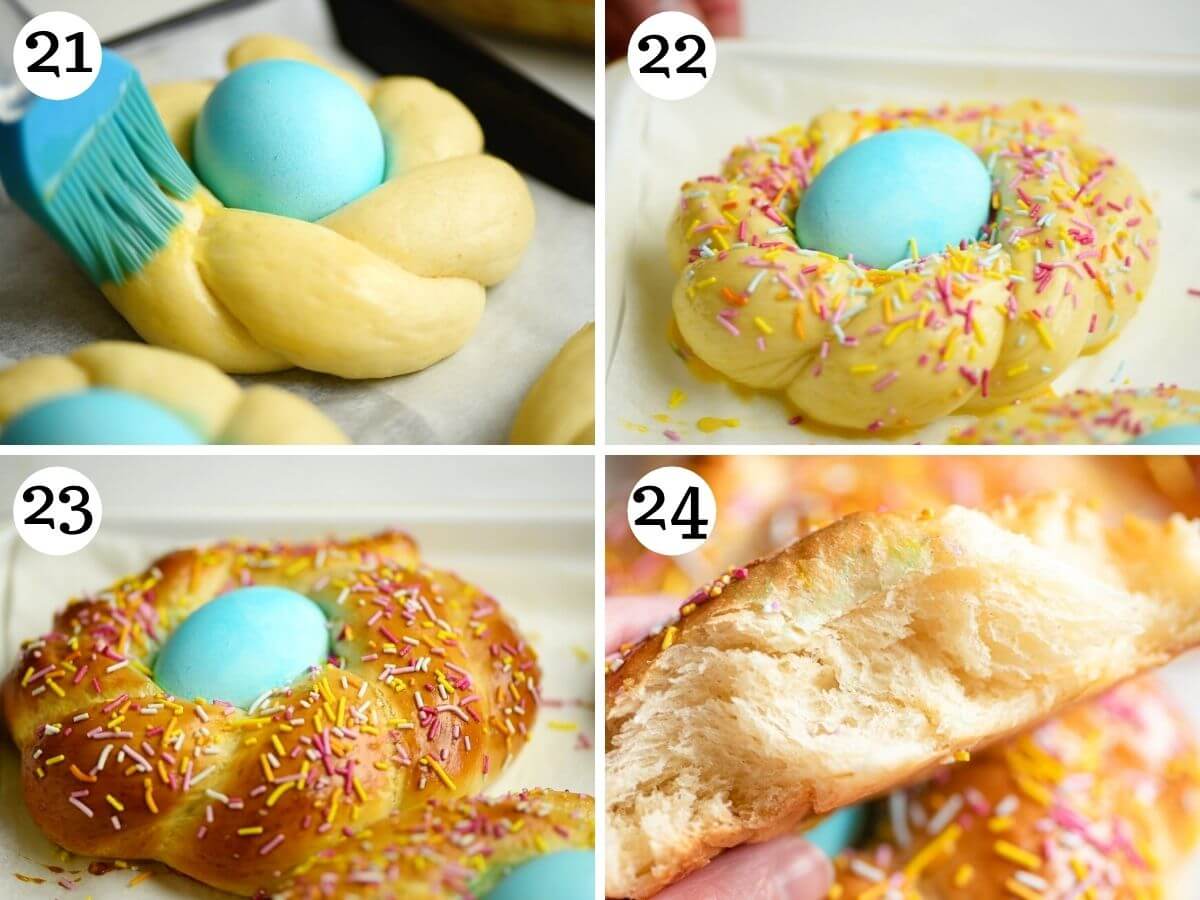
Remove from the oven, let cool and serve. Best eaten the same day (photo 24).
See how soft and fluffy the inside of the bread is in the photo below!
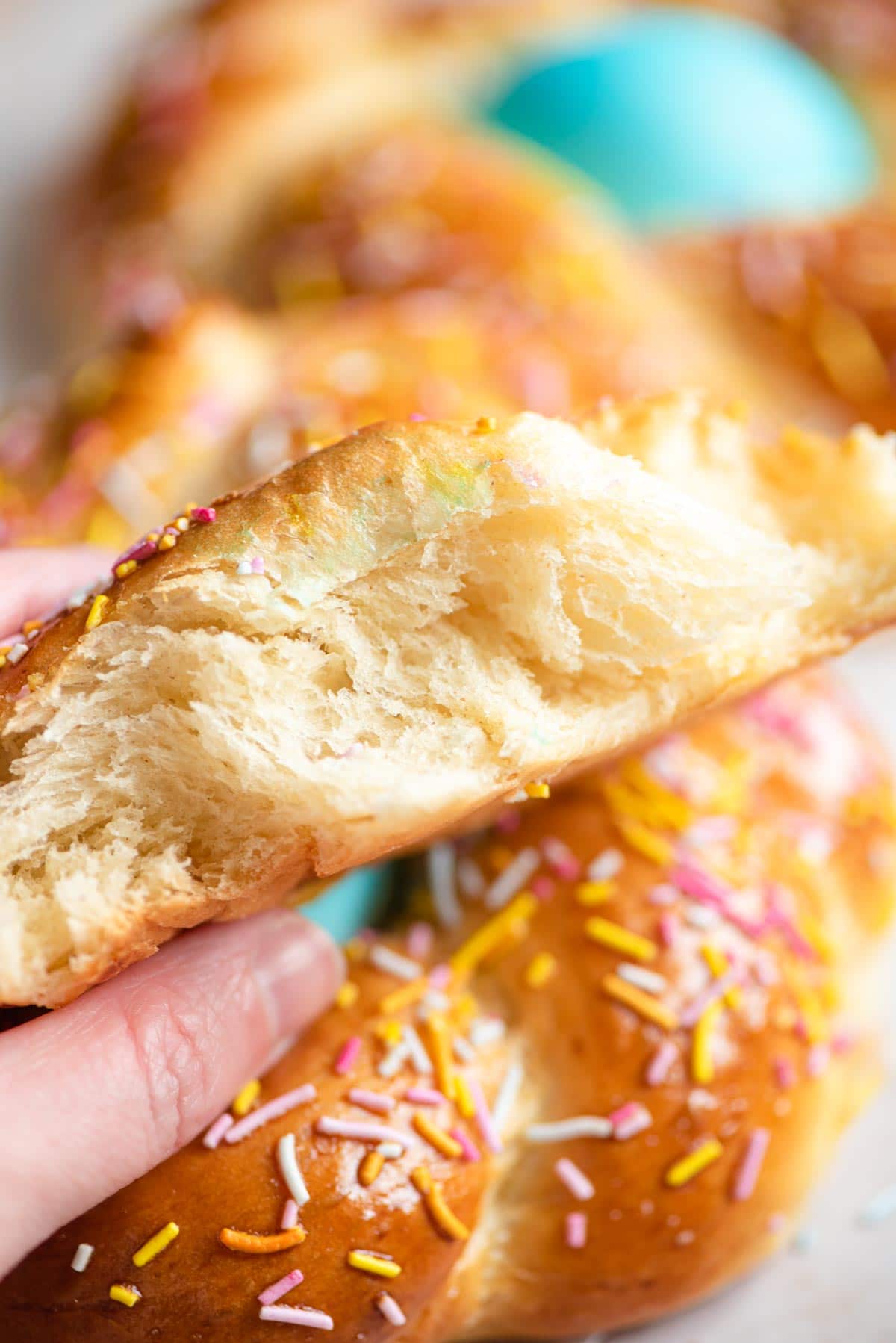
Top tips and recipe FAQs
- Serve the same day – this Italian Easter bread is best served the same day when it’s fresh and extra soft. Like most brioche breads it dries out quickly so it’s best spread with jam or butter or toasted the next day.
- Measure the flour correctly – if you don’t have a kitchen scale and are using cups make sure to spoon the flour into the cups and level it off with a knife so you don’t overpack the flour.
- Use whole milk – although you can use lower-fat milk just fine you won’t get the flavour and richness that you get from using whole milk!
- Colouring the eggs – I find that gel food colouring is best (you can choose any food colouring you like). White shelled eggs give will give you brighter colours.
- Additional flavours – you can add in candied peel or raisins if you like and can adapt the flavours with something like anise or almond extract.
- Leftovers – leftover bread can be made into the most delicious French toast or dunked into a frothy cappuccino for breakfast if it has dried out too much.
Italian Easter bread is delicious eaten just as it is but can also be spread with jam or butter for breakfast or as a snack.
The best way to stop the food colouring from running onto the bed is to run them under cold water after the colouring has dried. Pat them dry before using.
Chop the eggs up and use them in salads or sandwiches. Make sure to store them in the fridge.
You can prepare the dough and place it into the fridge overnight until doubled in size. The next day you can shape them into wreaths and let them rise. They may take a little longer to rise since the dough is cold.
You can freeze the baked bread for up to 3 months. Defrost completely then warm up in the oven or toast if preferred.
More Italian Easter and celebration recipes
- Pizza Rustica recipe
- Italian Lamb Ragu
- Torta Pasqualina!
- Cenci di Carnevale (Chiacchiere, Crostoli, Bugie) Italian Fried Pastries
If you’ve tried this Italian Easter Bread or any other recipe on the blog then don’t forget to rate the recipe and let me know how you got on in the comments below, I love hearing from you! You can also FOLLOW ME on FACEBOOK, INSTAGRAM and PINTEREST to see more delicious food and what I’m getting up to.
Step By Step Photos Above
Most of our recipes come with step by step photos, helpful tips and tricks to make it perfectly first time and even video!
Italian Easter Bread
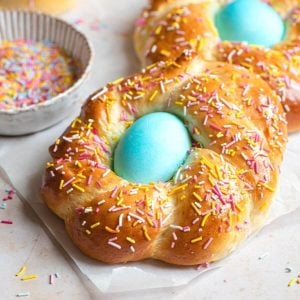
Ingredients
- 3.5 cups bread flour, (470g) *spooned and leveled
- 6 tbsp unsalted butter, melted (85g)
- 1 cup whole milk, warmed (240ml)
- 3 large eggs
- ⅓ cup granulated sugar, (70g)
- ½ tsp salt
- 2 tsp instant yeast, fast action yeast
- 1 tsp vanilla extract
- Zest of 1 lemon
- 8 raw eggs in their shells
- Food coloring for painting the eggs, (optional)
Instructions
- Gently warm the milk (it shouldn't be hot) and melt butter separately.
- Add the flour, sugar, salt and lemon zest to a bowl of a stand mixer and mix to combine.
- Add the yeast, mix to combine then make a well in the center of the bowl. Add the whisked eggs (2 large), warm milk, melted butter and 1 tsp of vanilla.
- Using a paddle attachment mix everything for a few seconds then swap to a dough hook attachment and knead the dough for 10 minutes on a medium/low speed. The dough will be very sticky but shouldn’t stick to your hands when touched.
- Transfer the dough to a clean, lightly oiled bowl, cover with plastic wrap and let is rise for 2 hours or until doubled in size.
Colouring the eggs
- Paint raw, uncooked eggs with any food coloring of your choice. I find that gel food coloring works best. Let them dry completely then give them a gentle rinse under cold water to stop the colour running onto the dough. Pat them dry with kitchen paper.
- Note: It’s best to use white shelled eggs rather than brown.
Assembling the Easter bread
- Once risen, knock the air out of the dough and place it on a clean work surface very lightly dusted with flour (don’t add too much or it’ll be too difficult to roll).
- Cut the dough into 8 then cut each piece in half so you have 16 pieces. Roll two pieces of dough to roughly 10 inch long strands. Pinch the strands together at the top and weave them together to create a braid. Join the top and bottom ends together to create a wreath then place on a baking tray lined with baking parchment and place a colored egg in the middle of the wreath. Repeat with the remaining pieces.
- Cover the baking tray with plastic wrap and leave to rise again for 1 hour.
- Once risen, pre-heat the oven to 350F/180C.
- Gently brush the Easter bread with a beaten egg and top with sprinkles. Bake in the oven for 20-25 minutes until golden brown on top.
- Remove from the oven, let cool and serve. Best eaten the same day.
Video
Notes
- Preparing in advance – You can prepare the dough and place it into the fridge overnight until doubled in size. The next day you can shape them into wreaths and let them rise. They may take a little longer to rise since the dough is cold.
- *Measure the flour correctly – if you don’t have a kitchen scale and are using cups make sure to spoon the flour into the cups and level it off with a knife so you don’t over
- Serve the same day – this Italian Easter bread is best served the same day when it’s fresh and extra soft. Like most brioche breads it dries out quickly so it’s best spread with jam or butter or toasted the next day.
- Use whole milk – although you can use lower-fat milk just fine you won’t get the flavour and richness that you get from using whole milk!
- Additional flavours – you can add in candied peel or raisins if you like and can adapt the flavours with something like anise or almond extract.
- Leftovers – leftover bread can be made into the most delicious French toast or dunked into a frothy cappuccino for breakfast if it has dried out too much.
- Freezing – You can freeze the baked bread for up to 3 months. Defrost completely then warm up in the oven or toast if preferred.
Helpful Info for All Recipes
- I always use extra virgin olive oil in all of my recipes unless stated otherwise
- When I use canned or jarred tomatoes of any kind I always use Cirio or Mutti brands for the best results and flavour.
- All vegetables are medium sized unless stated otherwise
- All recipes are tested and developed using a fan (convection) oven
- Find out more about how nutrition is calculated.
- Check out our must have Italian Pantry Staples.
- You can also find all our Essential Kitchen Tools for Italian Cooking.
Nutrition
Nutrition information is automatically calculated, so should only be used as an approximation.

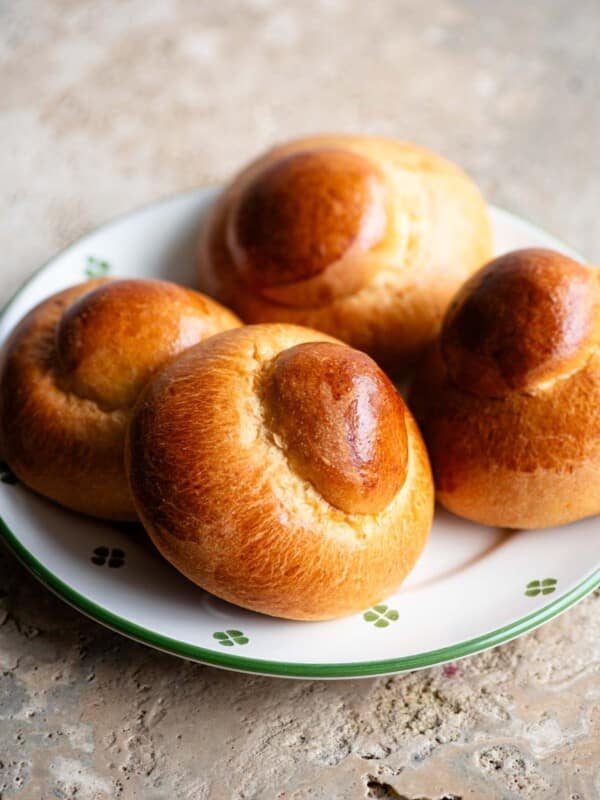
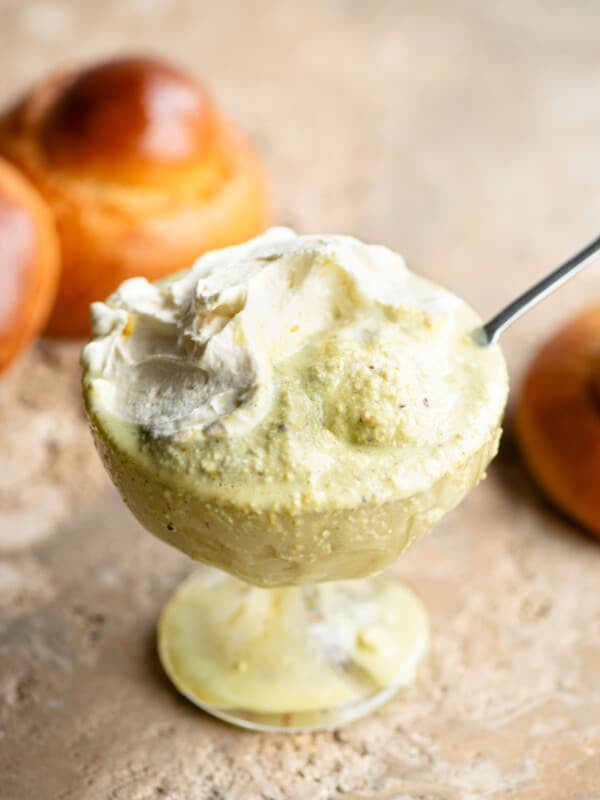
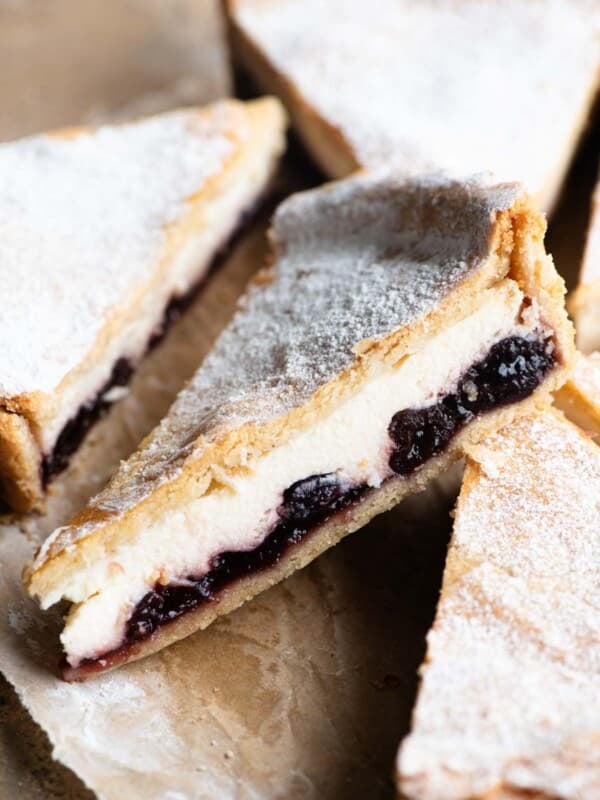
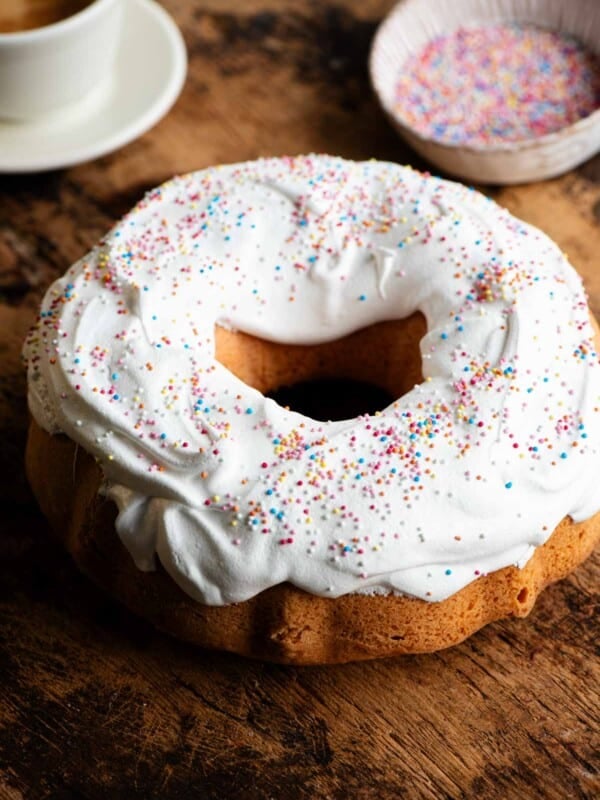









I am definitely making these and the Cuddora cookies for Christmas. My mothers family being from Sicily I am always looking for great recipes from there and I love your recipes. Thank you for all your great and easy Italian recipes with video. Being 79 I need all the help I can get.
I made this for a little family brunch and it was DELICIOUS. The bread was not too sweet or heavy, but perfectly fluffy and tender. I used orange zest, and I didn’t have enough bread flour but I swapped in some whole wheat pastry flour and it didn’t seem to do any harm. I did the first proof overnight in the fridge, and the dough was quite thick and hard so I struggled to roll it out, but again, no harm done–after the second proof at just-above room temperature, it was soft and light and baked up beautifully. Smelled amazing while baking, too.
love the recipe, I was looking for one like that. there is a similar recipe in Eastern Europe, you also paint the eggs raw(mainly red) and they cook in the oven. The eggs are then used during the Easter Sunday meal to greet the persons around the table, knocked against eachother (the eggs not the persons :)) and the words:”He is risen” are said to one another. The eggs taste really nice with the bread and dipped in a bit a mustard..a weird combination but once a year it works!
What a lovely tradition, thank you for sharing! 🙂